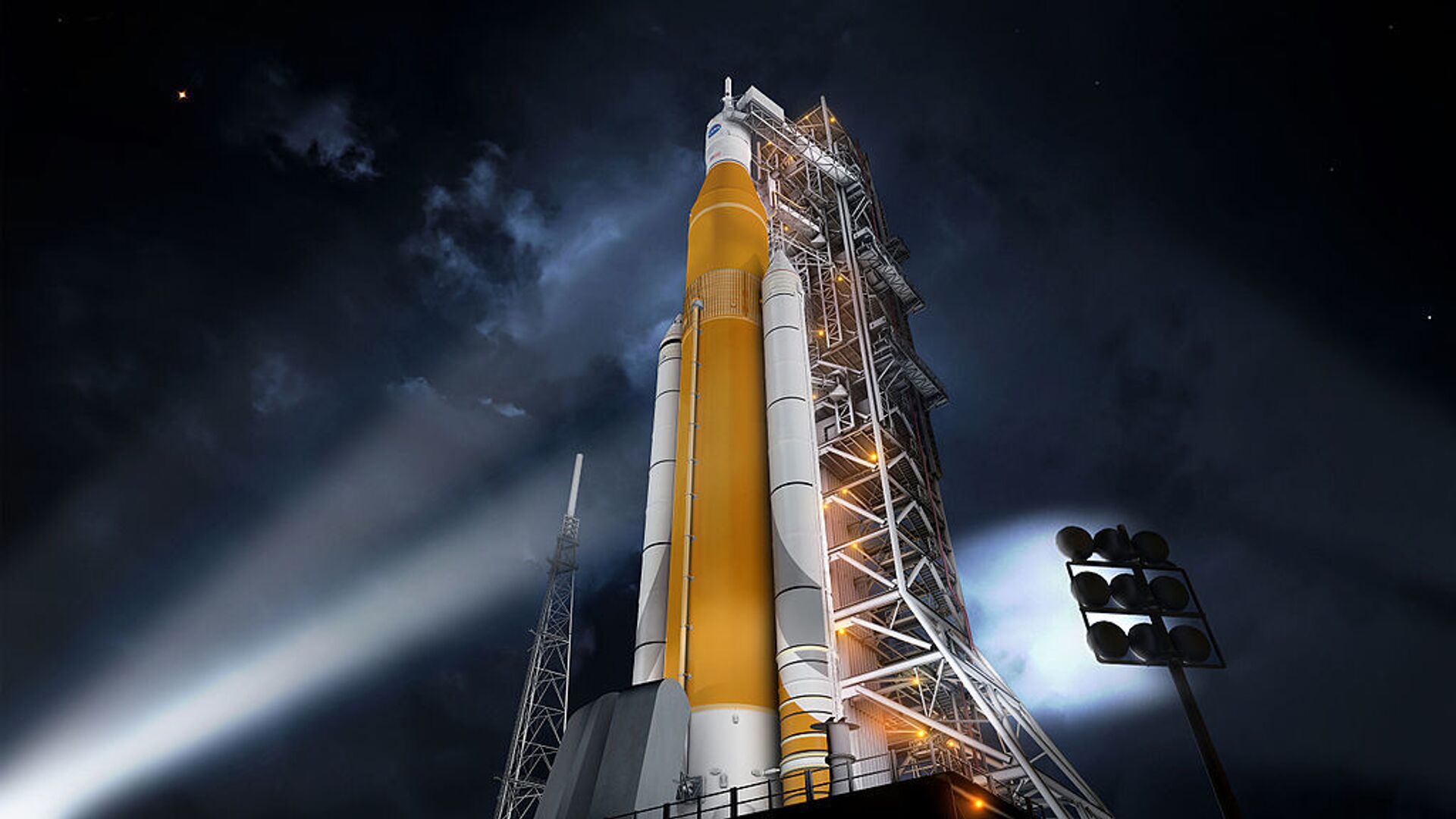https://sputnikglobe.com/20221012/nasa-plans-another-attempt-at-first-artemis-i-flight-in-november-1101786407.html
NASA Plans Another Attempt at First Artemis I Flight in November
NASA Plans Another Attempt at First Artemis I Flight in November
Sputnik International
After postponing its new moon rocket’s inaugural test flight several times, the US space agency NASA is prepared to try again, this time early on the morning... 12.10.2022, Sputnik International
2022-10-12T23:00+0000
2022-10-12T23:00+0000
2022-10-12T23:00+0000
science & tech
artemis
space launch system
nasa
astronomy
space flight
https://cdn1.img.sputnikglobe.com/img/107806/14/1078061463_0:0:1024:576_1920x0_80_0_0_21e377d15cda89216a6cb963aaf67d55.jpg
The Space Launch System’s (SLS) test flight was originally slated to happen on August 29, but a faulty engine sensor went off and the launch was canceled. Another attempt on September 3 was also canceled after a significant hydrogen leak was found.In the time since, NASA has been able to inspect the rocket thoroughly, especially after wheeling it into the massive Vehicle Assembly Building at the Kennedy Space Center in Florida, where NASA spacecraft are assembled for the launch pad. The 4.3-mile trek was made to protect the rocket from Hurricane Ian, a powerful storm that ravaged central Florida late last month.“Teams will perform standard maintenance to repair minor damage to the foam and cork on the thermal protection system and recharge or replace batteries on the rocket, several secondary payloads, and the flight termination system,” it added. “The agency plans to roll the rocket back to the launch pad as early as Friday, Nov. 4.”The November 14 launch window is 67 minutes long, and NASA has also requested backup windows on November 16 and November 19. If successful, the rocket will deploy the Orion spacecraft, which will orbit Earth for roughly 25.5 days before splashing back down in the Pacific Ocean. The flight will not be crewed.China has also developed plans for manned flights to the Moon, having begun exploring it with a series of new spacecraft and rovers in recent years.The Moon is believed to hold valuable scientific information about the formation of the Earth and the early solar system, as well as a treasure trove of rare minerals. Any future missions to Mars or other parts of the solar system are also likely to launch from a lunar base.
https://sputnikglobe.com/20220924/artemis-1-moon-mission-launch-postponed-for-3rd-time-over-poor-weather---nasa-1101182773.html
Sputnik International
feedback@sputniknews.com
+74956456601
MIA „Rosiya Segodnya“
2022
News
en_EN
Sputnik International
feedback@sputniknews.com
+74956456601
MIA „Rosiya Segodnya“
Sputnik International
feedback@sputniknews.com
+74956456601
MIA „Rosiya Segodnya“
science & tech, artemis, space launch system, nasa, astronomy, space flight
science & tech, artemis, space launch system, nasa, astronomy, space flight
NASA Plans Another Attempt at First Artemis I Flight in November
After postponing its new moon rocket’s inaugural test flight several times, the US space agency NASA is prepared to try again, this time early on the morning of November 14.
The Space Launch System’s (SLS) test flight was originally slated to happen on August 29, but a faulty engine sensor went off and the
launch was canceled. Another attempt on September 3 was also canceled after a significant hydrogen leak was found.
In the time since, NASA has been able to inspect the rocket thoroughly, especially after wheeling it into the massive Vehicle Assembly Building at the Kennedy Space Center in Florida, where NASA spacecraft are assembled for the launch pad. The 4.3-mile trek was made to
protect the rocket from Hurricane Ian, a powerful storm that ravaged central Florida late last month.
“Inspections and analyses over the previous week have confirmed minimal work is required to prepare the rocket and spacecraft to roll out to Launch Pad 39B at Kennedy Space Center in Florida following the roll-back due to Hurricane Ian,” NASA said in a
Wednesday blog post.
“Teams will perform standard maintenance to repair minor damage to the foam and cork on the thermal protection system and recharge or replace batteries on the rocket, several secondary payloads, and the flight termination system,” it added. “The agency plans to roll the rocket back to the launch pad as early as Friday, Nov. 4.”

24 September 2022, 14:53 GMT
The November 14 launch window is 67 minutes long, and NASA has also requested backup windows on November 16 and November 19. If successful, the rocket will deploy the Orion spacecraft, which will orbit Earth for roughly 25.5 days before splashing back down in the Pacific Ocean. The flight will not be crewed.
The SLS will be used for the Artemis missions, NASA’s first manned lunar missions in half a century. If Artemis I is successful, the Artemis II will take a manned flight around the Moon without landing on it, and Artemis III will land on the Moon itself. That mission, expected to come in 2025, will be the first time since 1972 that humans will walk on Earth’s only natural satellite.
China has also developed plans for manned flights to the Moon, having begun exploring it with a
series of new spacecraft and rovers in recent years.
The Moon is believed to hold valuable scientific information about the formation of the Earth and the early solar system, as well as a treasure trove of rare minerals. Any future missions to Mars or other parts of the solar system are also likely to launch from a lunar base.




